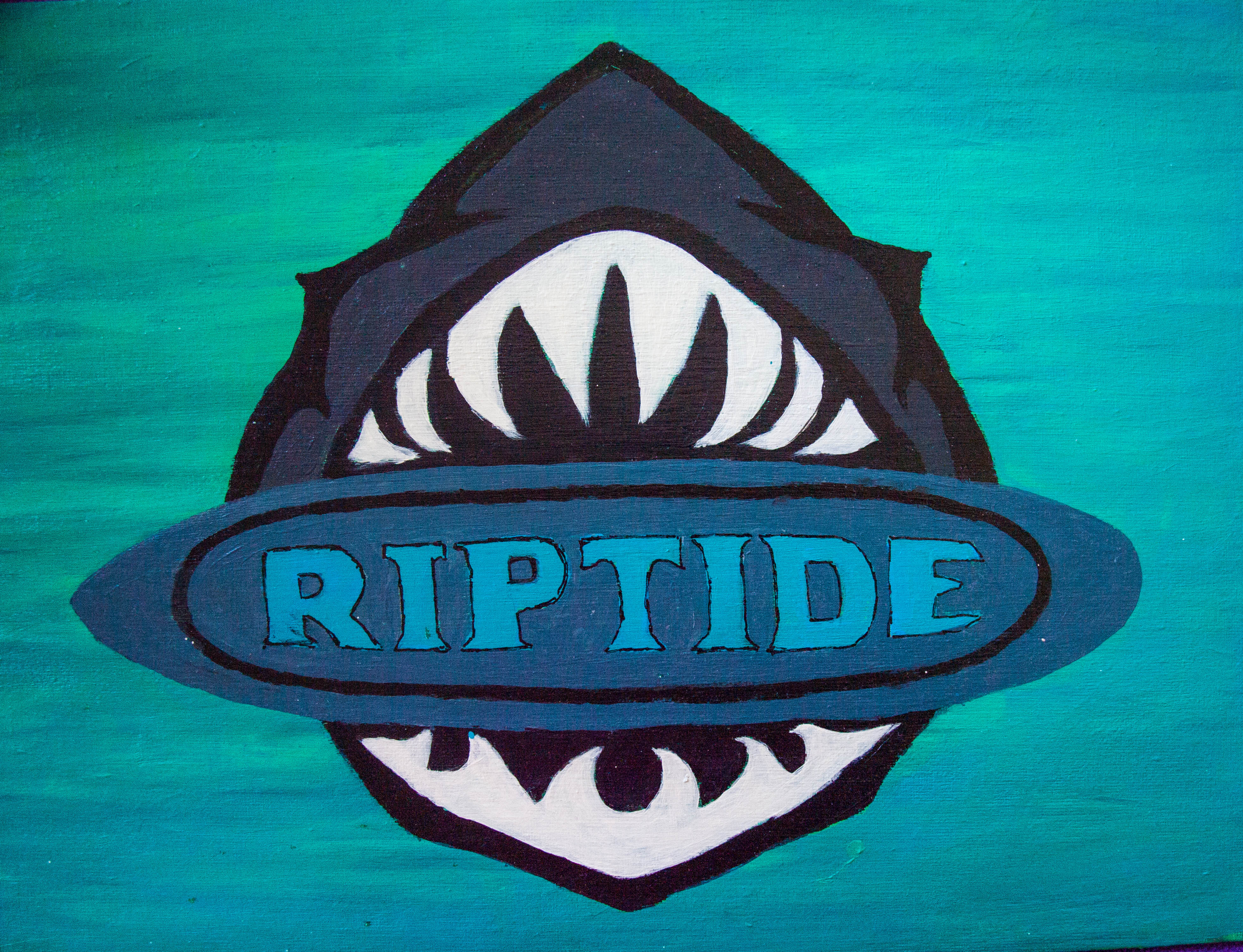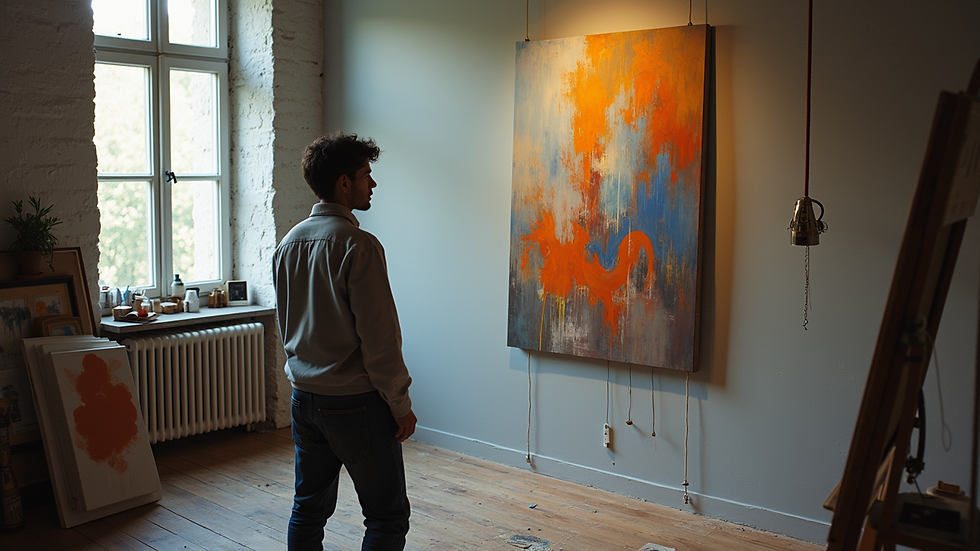Exploring the Creative Process Behind Abstract Art
- Riptide

- Jul 10
- 4 min read
Abstract art often fascinates and perplexes audiences. It's a realm where the traditional rules of representation are bent or broken, allowing artists to express emotions and concepts that words can scarcely capture. But what goes into creating such evocative works? In this post, we will explore the creative process behind abstract art, offering insights into the various stages artists go through, and revealing how individual expression shapes these unique pieces.
Understanding Abstract Art
At its core, abstract art moves away from portraying objects as they appear in real life. It emphasizes color, shape, line, and form over representational accuracy. This genre can evoke a range of emotions and interpretations. For example, a vibrant painting full of angular shapes may communicate energy and chaos, while soft strokes of pastels might invoke calm and serenity.
Experts argue that abstract art plays a critical role in modern art. It opens up spaces for interpretation based on personal experiences. A 2020 study conducted by the American Abstract Artists guild revealed that 78% of individuals felt a personal emotional connection to abstract works. This highlights how impactful abstract art can be in eliciting feelings without concrete subject matter.

The Initial Spark of Inspiration
Every artwork begins with inspiration. For many abstract artists, this inspiration can stem from nature, emotions, or societal issues. Painters like Jackson Pollock found inspiration in the chaotic rhythm of jazz, allowing it to influence their art's structure. Similarly, Mark Rothko drew on the color and emotional resonance of landscapes.
Artists might begin their creative process with simple sketches or notes reflecting their ideas. This raw form can evolve over time, as they experiment with colors, materials, and techniques. The spontaneity intrinsic in these early stages often remains crucial throughout the entire artistry.

Experimentation and Material Exploration
For abstract artists, the medium and materials they choose play a significant role in the creative process. This stage involves experimentation with different paints, canvas types, and tools. Acrylics, oils, and mixed media offer versatility, allowing artists to explore unique textures and finishes.
Many artists enjoy working with unconventional materials alongside traditional paint. For instance, they may incorporate fabric or found objects to enhance the depth of their artwork. Significant art movements, such as Dadaism, embraced this experimental nature by breaking boundaries and encouraging artists to think outside the box.
An important factor in experimentation lies in allowing oneself to fail. Artists often share that some of their most significant breakthroughs arise from mistakes, leading them to unexpected and thrilling directions. Keeping an open mind and embracing the unknown is vital during this process.

The Artistic Process: Steps to Creation
Once inspiration strikes and experimentation with materials is underway, the actual artistic process begins. Here are some common steps artists might follow:
Planning: While some artists prefer to go with the flow, many start with a rough plan. This could involve deciding on a color palette or sketching a few shapes to guide them.
Building Layers: Abstract art often involves creating layers. Artists repeatedly apply and remove paint to build depth and texture. This layered approach can evoke different feelings as the viewer's eye explores the artwork.
Balancing Composition: Even in abstraction, composition remains important. Artists consider the placement of colors and shapes carefully. The goal is to create balance while allowing tension and movement within the piece.
Final Touches: As the artwork nears completion, artists step back frequently to assess their work. This helps them identify areas needing adjustment, emphasizing particular elements or harmonizing the entire piece.
Reflection: After finishing, many artists take a moment to reflect on their journey throughout the artwork. They analyze the emotion behind their creation and how it aligns with their original inspiration.
The Emotional Journey
The emotional connection between the artist and their work cannot be understated. Creating abstract art can be an intense experience, often reflecting the artist's personal battles, joys, or fears. Abstract pieces become vessels for these emotions, capturing the essence of a moment or feeling in time.
Artists frequently experience a range of emotions throughout their creative journey. Moments of frustration can accompany breakthroughs, and elation may come from unexpected insights. This emotional rollercoaster often finds its way onto the canvas, rendering each piece unique and deeply personal.
Moreover, when viewers engage with abstract works, they may find themselves on a parallel emotional journey. The ambiguity of abstract art allows individuals to project their feelings and interpretations, creating a shared bond between the artwork and its audience.

Encouraging Exploration of Abstract Art
As a reader, you may feel inspired to embark on your abstract art journey. Here are a few actionable recommendations to cultivate your creativity:
Start Small: Begin with small canvases or even paper. Allow yourself to play with colors and shapes without the pressure of creating a masterpiece.
Use a Limited Palette: Limit your colors for your first few works. This can simplify your decision-making process and help you develop a cohesive look.
Explore Different Techniques: Don’t hesitate to experiment. Try pouring paint, using a palette knife, or even finger painting. Different tools can yield different results and inspire fresh ideas.
Visit Galleries and Museums: Gain inspiration by observing the work of established artists. Engage with diverse styles and techniques to help inform your practice.
Join a Workshop or Class: Connecting with fellow artists can enhance your learning process. Workshops are excellent opportunities to share ideas, receive feedback, and develop your skills.
Embracing abstract art can lead to profound personal discovery. As you immerse yourself in this creative process, you will uncover more about yourself and your artistic voice.
By engaging in the vibrant world of abstract art, you can deepen your understanding not only of art itself but also of the myriad ways it reflects the human experience. You may find that the journey holds as much significance as the final piece. So grab your materials, unleash your creativity, and let your emotions ignite your artistry as you pen your own story in abstract form, just as many artists have done at riptideart.






Comments